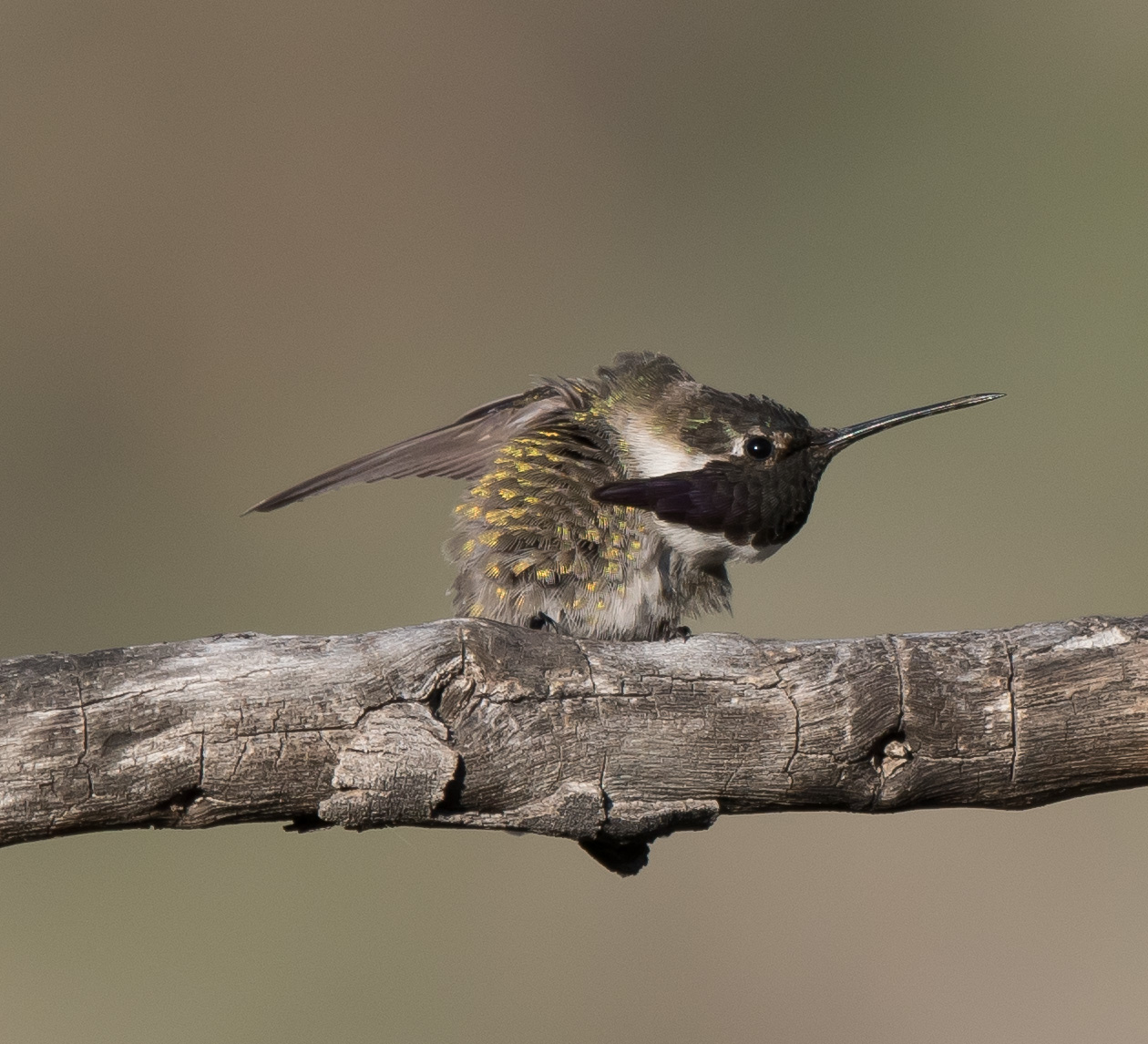This first is very colorful bird, but my best photo did not capture that bright red belly that makes it a great find. The Painted Redstart actually belongs to the family of Wood Warblers and it is a summer resident in the higher altitudes of the American southwest. As usual for most warblers, they are very active and do not sit still for photos. It poses with its wings and tail spread out. The first photo is a side view of one of these birds and just for those that have never seen one of these beauties, I am including a most unglamorous bottom shot to show off that red patch.
Painted Redstart
As we moved from one campsite to another, working our way up the mountain, we came to Arcadia Campsite and this is the place where we first found the Yellow-eyed Juncos that I wrote about in my first post. We also came across a family of Hermit Thrushes. Mom and dad were hopping around the campgrounds and 2 recent fledged young were following and checking out what there was to eat and how to find it. The photo below is one of the juvenile birds.
Hermit Thrush
Just a short distance from Arcadia campsite is the Cluff Dairy site and we saw lots of birds in this location, but did not have much luck with photos. We did see Grace's Warblers, Hepatic Tanagers, a Western Tanager, a Plumbeous Vireo, an Acorn Woodpecker, White-breasted Nuthatches, and a Pygmy Nuthatch. The Pygmy Nuthatch was the only one that gave me a opportunity for a photo.
Pygmy Nuthatch
The next stop was Twilight Campgrounds where we found our first Hairy Woodpeckers and Brown Creepers. It was a pair of the Hairy Woodpeckers and below is a photo of the male. The female lacks the red spot on the crown. Not a great photo, but for now this will have to do.
Hairy Woodpecker
The Brown Creeper is an odd little bird and the only member of the Creeper family found in the United States. They are often overlooked and can be hard to see if one is not familiar with them. They land near the bottom of a tree and work their way upward probing of insects and insect eggs in the bark of the tree. When viewing the photo below you will get a better understanding about how they can be easily overlooked. It's kind of like the 'Where's Waldo' pictures from a few years back.
Brown Creeper
At Columbine there is a visitor center and it is only open on weekends and the last 7 miles of road leading to this campground is not paved. It is passable by auto, but it is rough and rocky and dusty in spots. At Columbine I managed to photograph a House Wren. These busy little birds were fairly abundant at almost every stop along the way. I remember these birds as backyard birds back in Nebraska readily nesting in wren houses in people's back yards. Much different to see them in wooded mountain habitats in Arizona.
House Wren
This is also the spot where I was able to capture my first photo of a Cordilleran Flycatcher. This bird belongs to the family of Empidonax Flycatchers and they can be very difficult to identify as they all look quite a bit alike. Once one studies them enough and with some great lessons from some of the more advanced birders, they do become a tad bit easier to identify. Their call note is sometimes the best way to tell, but even then that is tough. Habitat also is a good field mark. Not too long ago the Cordilleran and the Pacific-slope Flycatcher was considered the same species but have been split into 2 different species. This one is a Cordilleran due to the habitat it was found in and also its call that it was frequently emitting.
Cordilleran Flycatcher
Will finish off this post with a Funereal Duskywing Butterfly and a Gila Spotted Whiptail Lizard. These last 2 were just a couple of the non-avian photos that I captured on the way up the mountain.
Funereal Duskywing Butterfly
Gila Spotted Whiptail Lizard
More photos to follow in another blog.























































